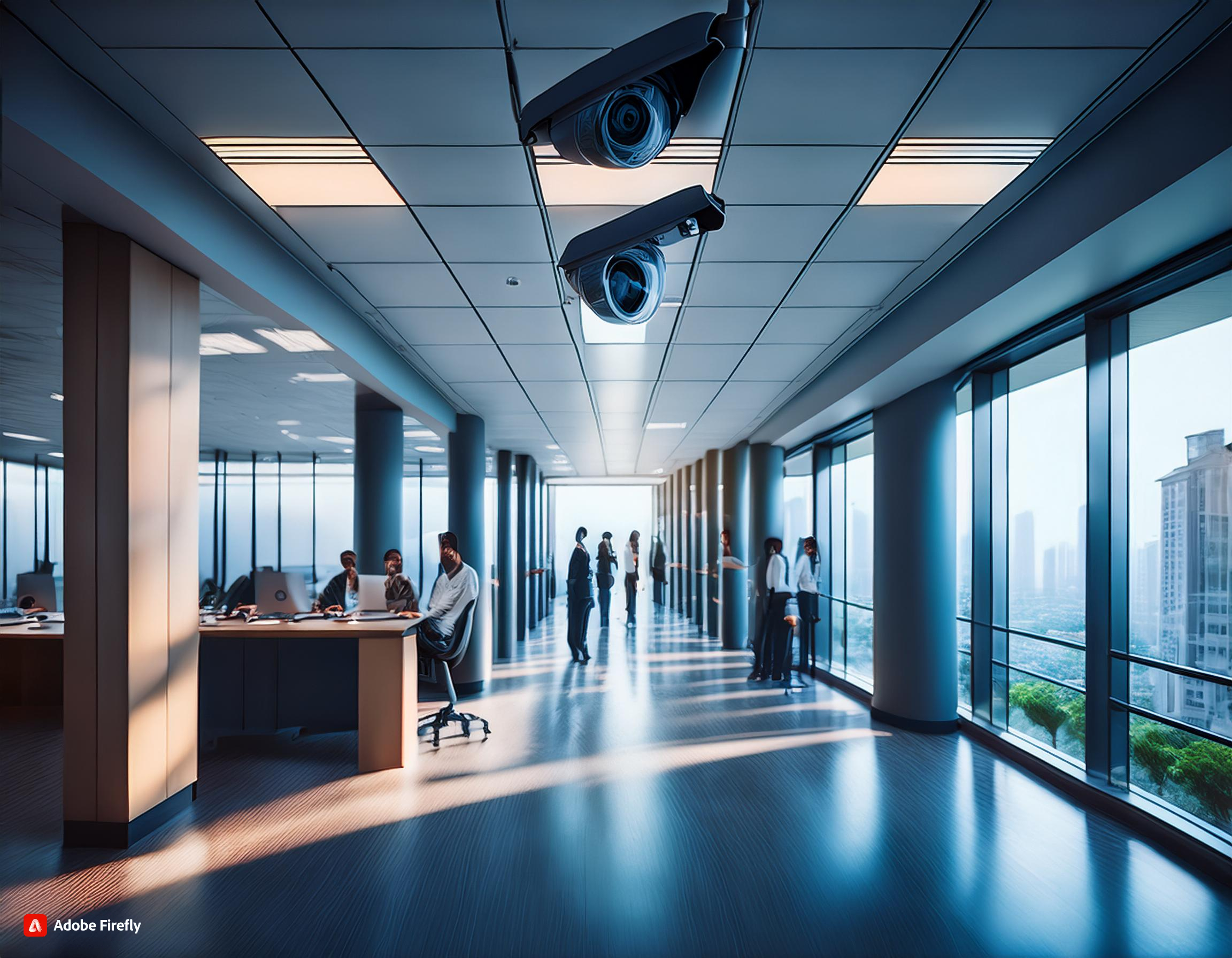Introduction
Remote guarding has emerged as a pivotal solution for businesses aiming to ensure employee safety while optimizing operational efficiency. Unlike traditional on-site security guards, remote guarding leverages advanced technology such as video surveillance to monitor premises from a distance. This approach not only provides a comprehensive view of security but also offers several unseen benefits. This blog delves into the lesser-known advantages of remote guarding, backed by data, metrics, and expert opinions, highlighting why it is becoming an indispensable tool for modern businesses.
The Rising Need for Enhanced Employee Safety
Employee safety has always been a priority for businesses, but the COVID-19 pandemic and subsequent shifts in work environments have heightened the focus on maintaining secure workplaces. As organizations adapt to hybrid work models and decentralized operations, the need for robust security measures that can protect employees, regardless of their location, has become more apparent.
A study by the Occupational Safety and Health Administration (OSHA) indicates that over 2 million workers are victims of workplace violence each year. This alarming statistic underscores the importance of implementing effective security measures to safeguard employees. Traditional security methods, such as on-site guards, have their limitations, especially in large or multi-location enterprises. Remote guarding addresses these gaps by offering real-time monitoring and rapid response capabilities, thereby significantly reducing the risk of incidents.
The Mechanics of Remote Guarding
Remote guarding involves the use of strategically placed security cameras and sensors connected to a centralized monitoring system. This system is overseen by trained security professionals who can monitor multiple locations simultaneously, thanks to advancements in video analytics and artificial intelligence. Unlike static security guards, remote guarding provides continuous surveillance, ensuring that all areas of a property are covered without the need for physical presence.
According to Solink, one of the key advantages of this system is its ability to monitor an entire property at once. This holistic approach not only improves the scope of surveillance but also allows for quicker identification and response to potential threats. In contrast, traditional security guards are often limited to specific areas and can only respond to incidents within their immediate vicinity.
Unseen Benefits of Remote Guarding for Employee Safety
-
Real-Time Incident Response
Remote guarding systems have with real-time video feeds and analytics that allow security personnel to detect and respond to incidents as they happen. This immediate action can be crucial in preventing harm to employees. For instance, if a suspicious individual is detected near an entrance, remote guards can issue warnings through loudspeakers or notify on-site personnel and local authorities, thereby averting potential dangers.
-
Deterrence of Workplace Violence
The presence of a robust remote monitoring system can act as a significant deterrent to workplace violence. Employees are less likely to encounter threats if potential aggressors know they are being monitored. Stealth Monitoring, a leader in remote surveillance, highlights that remote guarding can reduce security-related costs by up to 60% while still providing a visible and effective deterrent against violence and theft.
-
Improved Employee Well-Being
Knowing that their workplace is under constant surveillance can significantly improve employees’ sense of safety and well-being. This psychological benefit can lead to increased job satisfaction and productivity, as employees are less likely to feel anxious or threatened in a secure environment. Moreover, remote guarding can monitor for non-security-related incidents, such as medical emergencies, ensuring that help is dispatched immediately when needed.
-
Enhanced Access Control
Remote guarding can be integrated with access control systems to ensure that only authorized personnel enter specific areas. This is particularly important in industries where sensitive information or valuable assets are at risk. By monitoring entry points and using video verification, remote guards can prevent unauthorized access, thereby protecting both employees and company assets.
-
Scalability and Flexibility
One of the most significant advantages of remote guarding is its scalability. As a business grows, its security needs can expand without the need for additional on-site guards. Remote guarding systems can easily be scaled to cover new locations or increased square footage, ensuring that all employees, regardless of their location, are equally protected. This flexibility also allows businesses to adapt their security measures as threats evolve.
-
Cost Efficiency
While employee safety is paramount, businesses must also consider the cost implications of their security measures. Remote guarding offers a cost-effective alternative to traditional security guards. Solink notes that maintaining on-site security personnel requires multiple salaries to ensure 24/7 coverage, which can be financially burdensome for many organizations. In contrast, remote guarding can provide round-the-clock surveillance at a fraction of the cost, without compromising on security quality.
-
Data-Driven Security Enhancements
Remote guarding systems collect vast amounts of data for analysis to improve security protocols continuously. By reviewing footage and incident reports, businesses can identify patterns or vulnerabilities in their security infrastructure. This data-driven approach allows for proactive adjustments, ensuring that employee safety measures are always up to date with the latest threats.
-
Compliance with Safety Regulations
Many industries are subject to stringent safety regulations that require regular monitoring and reporting. Remote guarding systems can assist businesses in meeting these compliance requirements by providing detailed records of surveillance activities and incidents. This not only ensures compliance but also helps in maintaining a safe work environment for employees.
-
Support for Remote and Hybrid Work Models
With the rise of remote and hybrid work models, ensuring the safety of employees who may not always be on-site has become a challenge. Remote guarding offers a solution by extending security measures beyond the physical office. Whether employees are working from home or in remote locations, they can be assured of their safety, knowing that their work environment is being monitored and protected.
-
Integration with Other Security Systems
Remote guarding systems can be integrated with other security technologies, such as alarms, motion sensors, and emergency communication systems. This creates a much more comprehensive security network. This integration ensures that all aspects of employee safety are covered, from detecting potential threats to coordinating a swift response in the event of an emergency.
Case Studies
Case Study 1: Retail Store Chain Reduces Workplace Incidents
A prominent retail chain in the United States implemented a remote guarding system across its multiple locations to enhance employee safety and reduce the risk of theft and violence. Prior to the implementation, the chain experienced frequent incidents of shoplifting and occasional altercations between customers and employees.
After installing remote guarding systems, the company reported a 30% reduction in workplace incidents within the first year. The remote guards were able to monitor the stores in real-time and alert on-site staff and law enforcement when necessary, preventing situations from escalating. The company’s management noted that employees felt safer knowing that they were being monitored and protected, which also led to increased job satisfaction and productivity.
Case Study 2: Manufacturing Facility Enhances Safety with Remote Guarding
A large manufacturing facility in the Midwest faced challenges in ensuring the safety of its employees, particularly during late-night shifts. The facility was located in a remote area, making it difficult for security guards to respond quickly to incidents. In addition, the on-site security was not able to cover certain areas due to the complex layout of the facility.
To address these challenges, the facility’s management decided to implement a remote guarding system. The system included high-definition cameras placed strategically throughout the facility, monitored by security professionals in a centralized control room. Within six months of implementation, the facility reported a 40% decrease in safety-related incidents. This included near-misses and unauthorized access to restricted areas.
One of the key benefits noted by the facility’s management was the ability of remote guards to provide real-time assistance to employees, such as guiding them through emergency procedures or notifying them of potential hazards. This proactive approach to employee safety significantly improved the overall security of the facility and ensured that employees felt protected at all times.
The Psychological Impact of Remote Guarding on Employees
One of the lesser-discussed benefits of remote guarding is its positive impact on employees’ mental well-being. Knowing that their workplace is under constant surveillance can significantly reduce anxiety and stress.
A survey conducted by the American Psychological Association (APA) states that employees who feel safe at work are more likely to be engage with their jobs. It also stated that these employees have a better job satisfaction. It also revealed that workplaces with robust security measures like remote guarding had lower turnover rates. This correlation between safety and employee well-being underscores the importance of investing in advanced security solutions that prioritize employee protection.
 Conclusion
Conclusion
As businesses continue to navigate the complexities of the modern work environment, ensuring employee safety remains a top priority. Remote guarding offers a versatile and effective solution that not only enhances security but also provides several unseen benefits. From real-time incident response to cost efficiency and scalability, remote guarding is proving to be an invaluable tool for businesses looking to protect their most important asset—their employees.











 Conclusion
Conclusion

